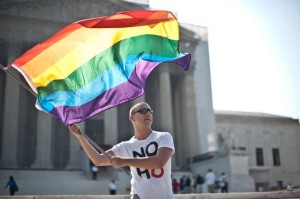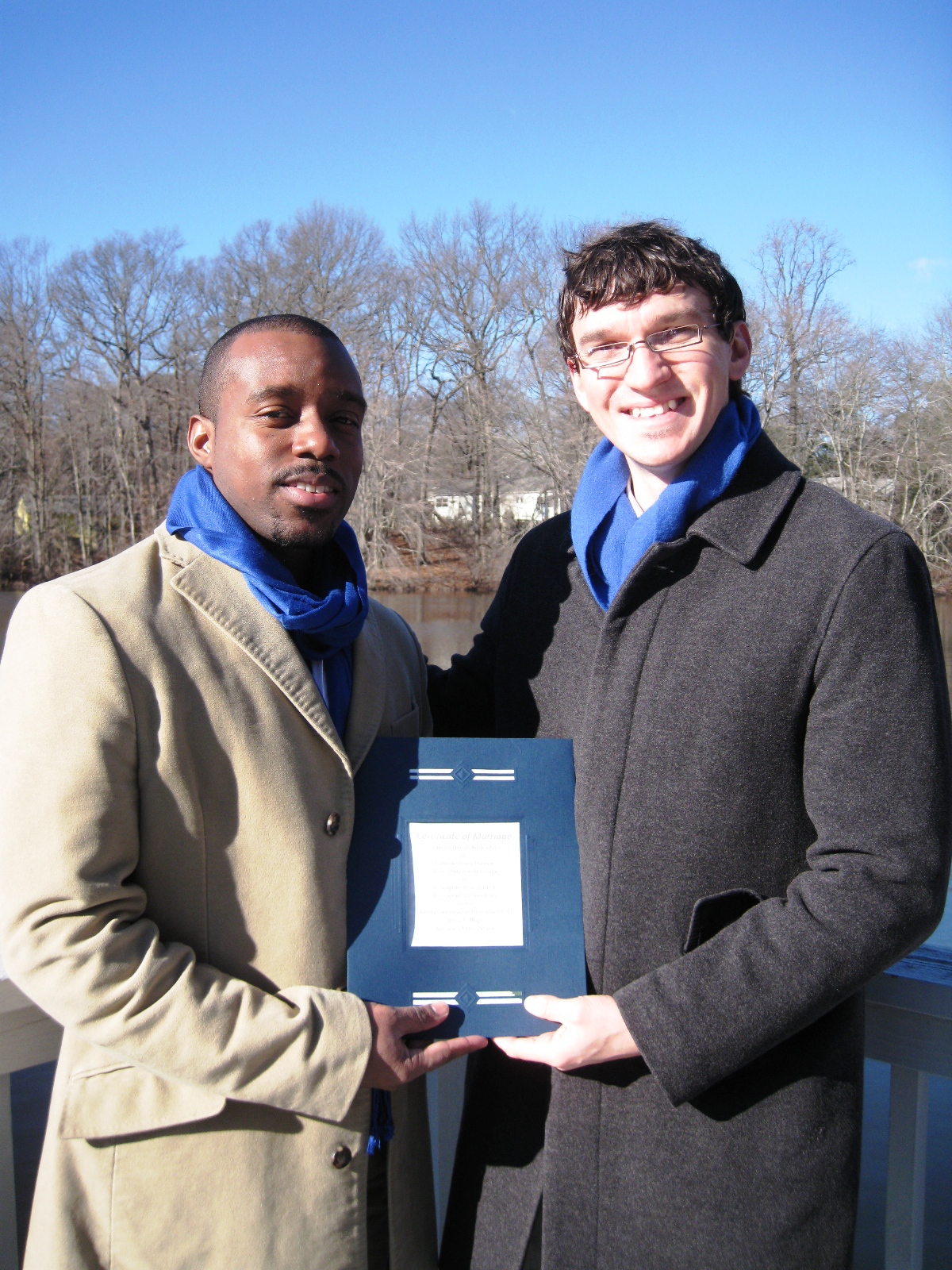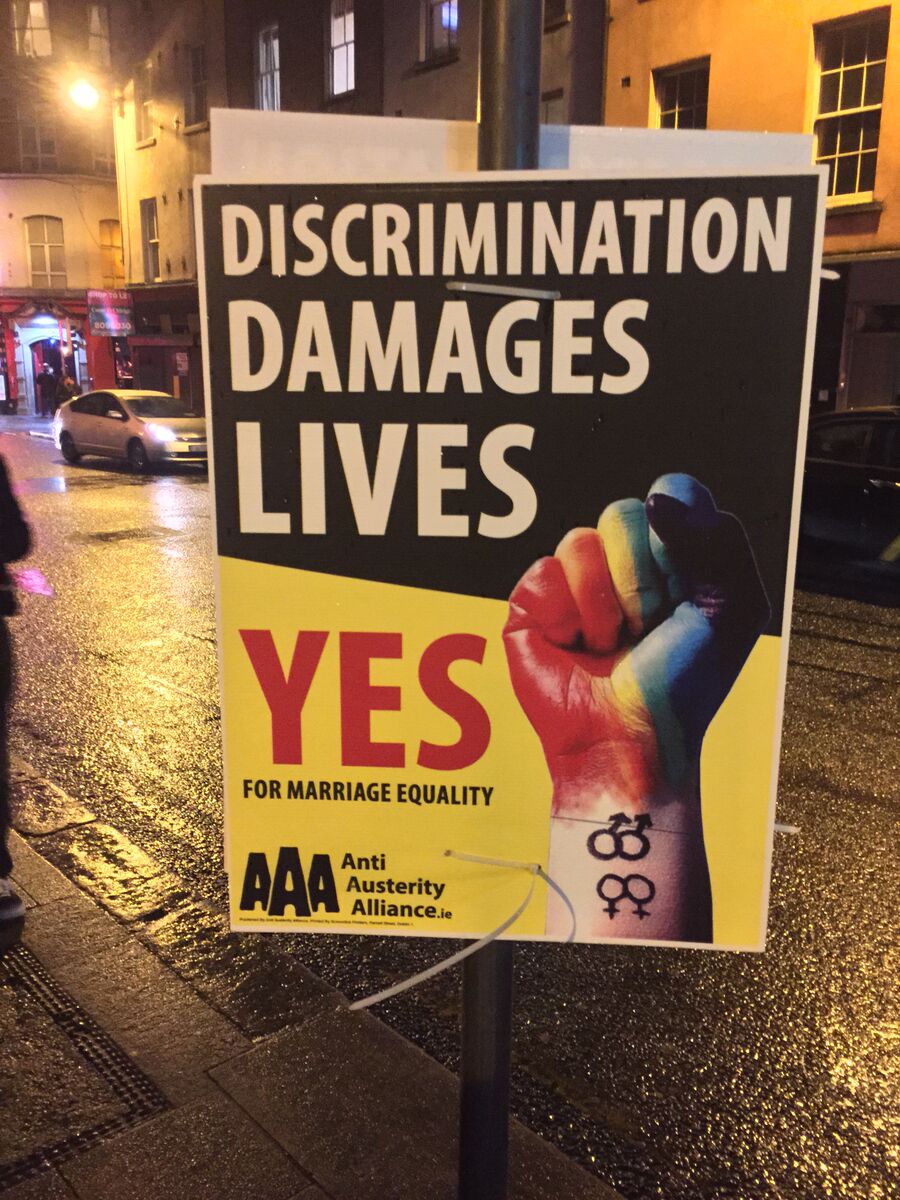
IN THE NOW largely forgotten 1950 case Sweatt v. Painter, the Supreme Court struck down a scheme that the state of Texas had concocted to continue to keep black applicants out of the University of Texas-Austin law school despite their merits—by creating a separate law school just for black applicants. The case got lost in the legal and cultural fallout following the socially momentous, but, in a way, constitutionally less interesting Brown v. Board of Education decision four years later. But Sweatt offers an untapped resource for gays facing an alluring but fuzzy legal future after the Supreme Court in U.S. v. Windsor (2013) declared the core of the Defense of Marriage Act unconstitutional—but through legal reasoning that many, even those who praise the case’s result, find mystifying.
Written when the separate-but-equal test for equal protection from Plessy v. Ferguson (1896) was still authoritative, Sweatt v. Painter provides a fine-gage tool for use in gay constitutional cases that address seemingly separate-but-equal accommodations for gays, as when gays can form civil unions but not get legally married. The case also provides resources more broadly for gay cases since it explicates different types and orders of values that are constitutionally cognizable in equal protection cases in general.
In Sweatt, the Court held unconstitutional Texas’ establishment of an all-black law school as a separate but equal accommodation—even against state court holdings that the new black law school and the all-white law school in Austin were substantially equal. As an initial consideration, the High Court looked at measurable, material differences between the two schools—things like numbers of professors, of books in the library, of alumni, of courses offerings. And, no surprise, those conditions were not equal. But the court went on to claim that even if those measurements were identical, that would not be sufficient to establish the equality demanded by the Constitution. The Court wrote: “What is more important [are]those qualities which are incapable of objective measurement but which make for greatness. … Such qualities, to name but a few, include reputation … position and influence … standing in the community, traditions and prestige” (339 U.S. 629, 634). These are values of social appraisal, of society’s assessment. The whites-only law school had, but the newly confected blacks-only law school lacked “rich traditions” and the “prestige which only a history of consistently maintained excellence could command” (339 U.S. at 634-635), even if attendance at the all-black law school came with the same number of material benefits.
So, there are values of honor, prestige, and stature that matter constitutionally and matter even more than merely countable material interests. The relevant question to ask in trying to determine whether two institutions are substantially equal in the eyes of the Constitution is whether they are held socially in the same regard, with the same prestige and honor “in the community.” The law, even in its seeming neutrality, cannot be allowed to draw on or perpetuate socially perceived inequalities. And that is what the state of Texas law schools did.
Note that, while the facts of the particular case refer to blacks, the conceptual framework and principles operating in the case’s argument do not entail references to race. Consequently, the case’s legal schema translates with ease over to gay cases. Even if civil unions give gay men and lesbians in relationships the same bundle of legal perks, rights, obligations, and interests that marriage confers on members of different-sex relationships, society does not hold the two types of relationships and their legal embodiments in the same regard. Marriage is treated socially as a long honored, even sacred institution—or in the words of the famous final paragraph of the 1965 case Griswold v. Connecticut, which established privacy as a fundamental substantive right and enshrined within it the right to marry: “Marriage is a coming together for better or for worse, hopefully enduring and intimate to the degree of being sacred” (381 U.S. 479, 486). But the newly minted legal institution of civil unity isn’t even in the running to be counted as a long honored relationship, let alone a sacred one. For the longest period of the nation’s history, such relationships of couples living together with sexual congress but “without benefit of clergy” were illegal cohabitations; the fancy term for them was “meretricious” relations, even when heterosexual in composition. Eventually such relationships, even when legal, were demeaned by the gerund “shacking up.”
Notice too that social animus against a group is irrelevant to the constitutional analysis. Hostility against a group need not be in play for a legal distinction drawn with respect to the group still to be a constitutionally inequitable treatment of it. In defense of the separate but equal law school that they had established for blacks and which had been up and running for four years when the Supreme Court announced its decision, Texas whites could have claimed, “Gosh, blacks should be grateful to us whites for creating a law school for them; after all, before there was no law school for blacks to attend and now there is one, and it even has the same number of books as our law school. We’ve done blacks a big favor. Clearly we have no animus against blacks, for we have improved their lot in life. Blacks are ingrates to ask for more.” This is clearly an absurd defense.
But the legal defenses of the bar to same-sex marriage in California, which has established civil unions, had exactly this form at all of the various court hearings where Prop 8’s separate but equal treatment of gays was constitutionally challenged. Those defending Prop 8 claimed that the legal establishment of civil unions for gays shows there was no social animus against gays; gays get the same widgets in their relationships as we get in ours, so gays are not being discriminated against.
But you can even love people you automatically assume are not your equals. Traditionally marriage was just exactly such a relationship: men did not think their wives should vote; indeed it was unthinkable that women might. So though animus against some socially marked group registering in legal distinctions drawn against that group might be sufficient to register an inequitable treatment of that group, it certainly is not necessary, as Sweatt demonstrates.
What is key to establishing whether some legal differentiation is equitable or not is whether the two institutions legally distinguished are viewed in society’s eyes as having equal regard, estate, esteem, standing, station, stature, prestige, honor—dare we say—dignity. By this standard, separate-but-equal law schools are not substantially equal for constitutional purposes and neither should civil unions be so viewed. But then to an even greater degree, laws that view gay relations in even lower regard than civil unions will be unconstitutional as well. And so Sweatt provides a simple instrument for eliminating all bans on gay marriage.






